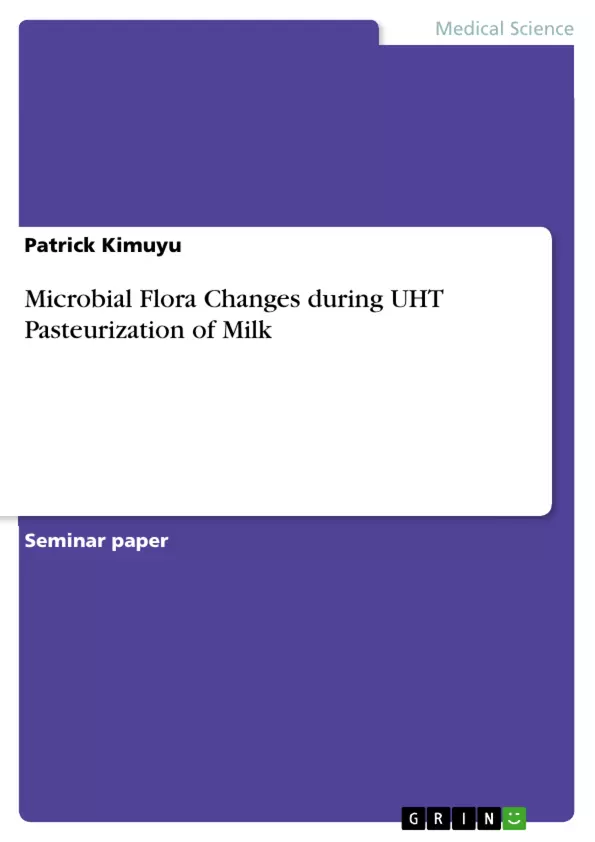This article provides a comprehensive discussion on how the microbial flora changes during Ultra-High Temperature pasteurization.
In the food production industry, food spoilage by microorganisms poses an immense challenge to food sustainability and health safety. Most of the preservation methods are aimed at destroying the microbial populations that are present in the raw materials, preventing contamination, improving the texture of the manufactured food products, and creating desired flavors.
For instance, Ultra-High Temperature pasteurization, commonly referred to as UHT pasteurization is a preservation method that is carried out to decontaminate raw food products. This preservation method is used predominantly in milk processing, unlike its alternative processing method, High Temperature/Short-Time pasteurization which is used to process an array of raw food materials. In most cases, raw milk is usually contaminated with bacteria, moulds and yeast microbes. However, bacteria constitute the greatest percentage of microbial populations in raw milk based on studies which have found different pathogenic bacteria in raw milk, especially L. monocytogenes, Salmonella spp, Campylobacter spp and E. coli.
Inhaltsverzeichnis (Table of Contents)
- Introduction
- Control of Contamination during Preparation Stage
- Transfer of Raw Milk to Heat Exchangers
- Decontamination at 63ºC to 72ºC
- Decontamination at 73°C to 150ºC
- Control of Contamination during Pre-packaging Stage
- Control of Contamination during Packaging
- Hermetic Sealing
Zielsetzung und Themenschwerpunkte (Objectives and Key Themes)
This article aims to provide a comprehensive discussion on the changes in microbial flora during Ultra-High Temperature (UHT) pasteurization. The article outlines the various stages of UHT pasteurization, including milk preparation, transfer to heat exchangers, and the decontamination process at different temperature ranges. The article also addresses the control of contamination during pre-packaging and packaging stages.
- Control of microbial contamination during UHT pasteurization
- Decontamination of raw milk at different temperature ranges
- The effect of heat on microbial flora in milk
- The importance of pre-packaging and packaging in preventing contamination
- The impact of UHT pasteurization on the shelf-life of milk
Zusammenfassung der Kapitel (Chapter Summaries)
The article begins by introducing the concept of UHT pasteurization and its significance in food safety. It then focuses on the different stages of the process, starting with the preparation of raw milk. This stage emphasizes the need for safe milking practices to control contamination from the udder and the environment. The transfer of milk to heat exchangers is the next step, which is crucial for preventing contamination from improper handling. The subsequent sections delve into the decontamination process during UHT pasteurization. The article explains how different temperature ranges destroy specific types of microorganisms, including non-spore-forming bacteria, spore-forming bacteria, and bacterial toxins. The penultimate section addresses the control of contamination during the pre-packaging stage. The importance of packaging milk within a short time frame after heat treatment is stressed to avoid re-contamination. Finally, the article discusses the control of contamination during packaging. The importance of using sterile containers and appropriate sterilization methods is highlighted to prevent contamination of the final product.
Schlüsselwörter (Keywords)
The main keywords and focus topics of the article include Ultra-High Temperature (UHT) pasteurization, microbial contamination, milk spoilage, heat treatment, decontamination, heat-resistant bacteria, spore-forming bacteria, non-spore-forming bacteria, pre-packaging, packaging, and shelf-life. The article emphasizes the importance of maintaining hygienic practices throughout the UHT pasteurization process to ensure food safety and extend the shelf-life of milk products.
- Quote paper
- Patrick Kimuyu (Author), 2018, Microbial Flora Changes during UHT Pasteurization of Milk, Munich, GRIN Verlag, https://www.grin.com/document/388524



